.
Food Handlers need to be aware of foods that require time/temperature control for safety to limit pathogenic microorganism growth or toxin formation.
Time/Temperature Control for Safety (TCS) foods – (formerly Potentially Hazardous Food (PHF)).
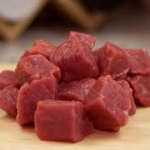
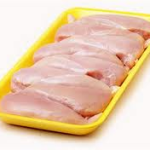
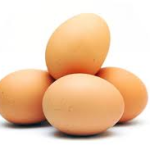
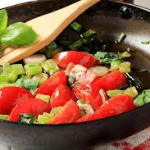
.
.
.
.
.
.
Handlers should know how to use and care for each type of thermometer in any operation. Food Handlers can follow these general guidelines however, food handlers should always follow the manufacturer’s directions.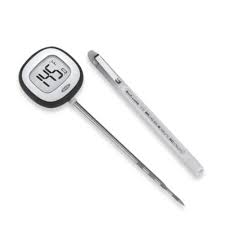
.
Thermometers must be washed, rinsed, and sanitized before each use and when checking different types of foods.
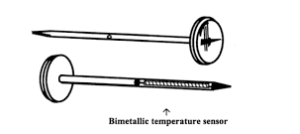 .
.
.
When checking the temperature of food, insert the thermometer stem or probe into the thickest part of the food.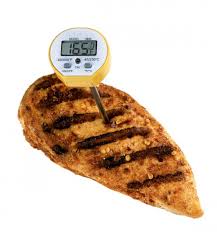

.… ..………………..
When using a bimetallic stemmed thermometer, insert the stem all the way into the food from the tip to the end of the sensing area.
.
When checking the internal temperature of thin food, such as meat or fish patties, use a small diameter or thin point probe.
.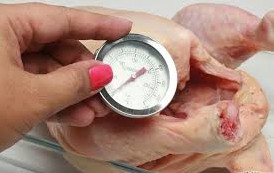
When checking packaged food place the thermometer between two bags to get a reading.
.
Danger Zone (41 °F – 135 °F)
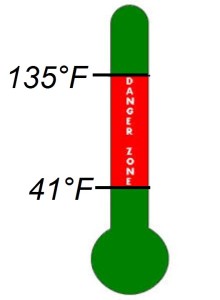
.
Food Handlers leaving food out too long at room temperature can cause bacteria (such as Staphylococcus aureus, Salmonella Enteritidis, Escherichia coli O157:H7, and Campylobacter) to grow to dangerous levels that can cause illness. Bacteria grow most rapidly in the range of temperatures between 41°F and 135°F, doubling in number in as little as 20 minutes.
.
This range of temperatures is called the “Danger Zone.”

eaving food out too long at room temperature can cause bacteria (such as Staphylococcus aureus, Salmonella Enteritidis,Escherichia coli O157:H7, and Campylobacter) to grow to dangerous levels that can cause illness. Bacteria grow most rapidly in the range of temperatures between 41°F and 135°F, doubling in number in as little as 20 minutes.
.
.
Freezers should be at a temperature range of 10°F/-10°F
.
Refrigerators should be below 41°F

KEEP ALL COLD FOODS BELOW 41°F
Food Handlers in both the home and commercial environments need to be aware of the importance of keeping foods out of the danger zone.

This temperature range ( exclusively for holding foods ) should not be confused with cooking temperatures. Cooking temperatures are specific to different types of proteins. Foodsafety.gov has chart that food handlers in both the home and commercial environments can use as a guide.
.
.